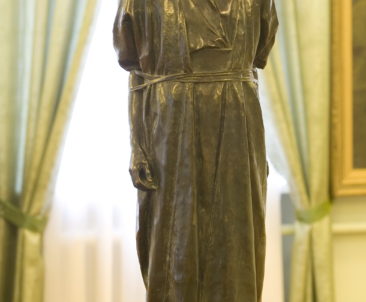
The future sculptor was born November 2, 1843 in the family innkeeper. The childhood of Mark Matveyevich was not an easy one. Here is how the sculptor himself spoke about him: “My childhood is too gloomy, so gloomy that I remember with a shudder. I was an unloved child, and I got it from everyone. Who wanted to beat me, even the servants; and no one caressed me. I was wearing old clothes, they called me “idol”, “tin hands”. I celebrated the position of a workhorse in the family. My mother did not humiliate me. “
Parents treated his son’s enthusiasm for drawing sharply negative, but despite this they arranged the boy as an apprentice to a wood carver. His work impressed the governor of Vilnius VI. Nazimova, and he contributed to the arrival of Mark Antokolsky in the Academy of Arts.
The sculptor not only learned Russian, but also became interested in Russian culture and history. The first large work of Antonokol “Ivan the Terrible” was a huge success and was acquired by Alexander II for the Hermitage. Later the master created many images from Russian history, such as: Nestor the chronicler, Ermak, Yaroslav the Wise.
In the Voronezh Regional Art Museum. In. N. Kramskoy sculpture “Christ before the people’s court” is made in bronze.
The sculptor himself spoke about his work: “I chose this moment because here the knot of drama was contacted, his mental movement at this moment is unusually grandiose.” Jesus appears in front of the viewer in full growth with his hands tied behind his back. He is outwardly calm, but behind this calmness lies true strength, determination and deep humanity. “In the statue I wanted to create silence and depth, external simplicity with inner depth …” – wrote the sculptor.
Europe enthusiastically accepted the work of Mark Matveyevich. At the World Exhibition in 1878 in Paris for the sculpture “Christ before the people’s court” he received a medal and the Order of the Legion of Honor. In Russia critics have reacted to the work very critically. However, despite numerous negative reviews, there were those who appreciated the author’s innovation. For example, Repin, Turgenev and Stasov called the sculpture a genius.
Antokolsky considered himself a Russian artist: “All my soul belongs to the country where I was born and with whom I got used. In the north my heart beats harder. I breathe more deeply there and more sensitive to everything that happens there. That’s why, no matter what I do, it will always be the result of those heartfelt impressions with which Mother Rus has nurtured, “Antokolsky wrote to V.Stasov.
But in 1893, Antokolsky left Russia forever. By his departure, he was pushed by the progressive deterioration of his health and the failure of his personal exhibition at the Petersburg Academy of Arts. Since 1897, he spent part of his time in Italy on Lake Maggiore, but still, in the priority for him remained work in Paris.
Antokolsky died July 9, 1902 in Frankfurt am Main in Germany from lung disease. He was buried by a famous sculptor in Russia in St. Petersburg, at the Jewish Transfiguration Cemetery.
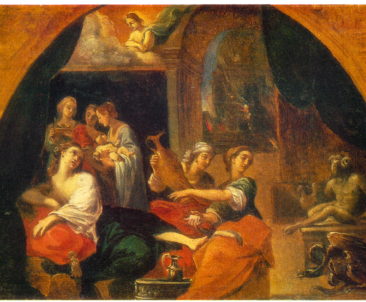
Annibale Carracci is one of many brilliant names in the history of Italian painting. Born in 1560 in Bologna in the family of an artisan, young Carracci realized that handicraft would not satisfy his ambition, and, following Agostino’s elder brother and Ludovico’s cousin, the future artist decided to devote his life to art. The early years of Annibale’s apprenticeship are hidden by a veil of secrecy, but it is commonly believed that the emergence of Karacchi’s style took place under the influence of a popular trend in this period – late Mannerism.
Despite this, already in the early works of Annibale fully manifested the originality of his technique. Features of work with color have caused a stream of criticism from the adherents of the classical old school. But the young artist did not stop the attacks of society, and later his style continued to develop. Already in 1582 the brothers Carracci earned praise for their craftsmanship – the order for the painting of the Fava Palace in Bologna. Researchers agree that this work is a model of an amazing style unity. The painting of the three halls, representing scenes from ancient mythology, took the brothers about two years. The result of Carracci’s new work was no longer the criticism, but the envy of the less fortunate colleagues.
In 1585, Annibale and Agostino Carracci founded their own school, later named “Academy of Desiring”. Annibale took an active part in the pedagogical and artistic activities of the Academy.
In 1597, Annibale Carracci was invited to Rome by Cardinal Farnese to design the Palazzo Farnese with a fresco painting on mythological subjects. This work was taken from Annibale and his brother Agostino along with the disciples for eight years. The frescoes they created were named “Triumph of Bacchus and Ariadne”, “Mercury and Paris”, “Pan and Diana”, “Jupiter and Juno”, etc., remarkable for their successful distribution, in terms of meaning and variety of composition and fresh colors belong to a number of especially successful works of the artist.
In 1602, Annibale Carracci received an order for the decoration of the Roman chapel of Herrera de San Giacomo degli Spagnoli. However, since the beginning of 1605, severe rheumatic pains deprived the artist of the opportunity to paint.
Despite general recognition, Annibale Carracci died at the age of 49 in poverty and was buried in accordance with his death request in the Pantheon, next to Rafael Santi, the great Italian painter.
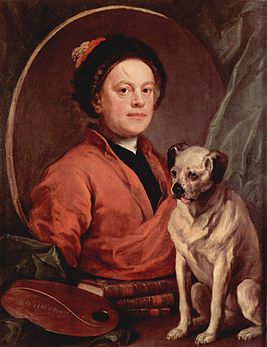
English graphic artist and painter, who became famous for his brilliant satirical works, William Hogarth – a vivid example of diligence, perseverance and talent. He was born on November 10, 1697 in a very poor family. The life of his father, Richard Hogarth, was extremely unsuccessful, he even spent 4 years in a debt prison. William’s mother was selling drugs, but it was not profitable. Six of the nine Hogart children did not live to be 10 years old, and William became the first surviving child. Heavy childhood left an imprint on the personality of the future artist, making him stubborn and purposeful.
At school, William Hogarth showed the ability to draw, but other subjects were given to him very hard. At the age of 16, he decided to quit his studies and entered the apprenticeship with an engraver for silver. Seven years later, William Hogarth opened his own workshop in the parental home. This idea was successful, engravings and illustrations brought a big income, but the artist dreamed of the artist’s laurels, and in 1724 he entered the discipleship of Sir James Thornhill, the famous master of historical painting.
In addition, William Hogarth was fond of portraits, but his work can not be called parade. They are more like genre scenes. A good example is the “Portrait of Garrick with his wife,” where the couple do not pose in the classical view of the time, but as if captured by the artist by surprise.
The paintings and engravings of William Hogarth are very rich in meaning, they have a hero and a story. Hogarth liked moralizing stories, and he himself created several such cycles of paintings called “Career Mota” and “Fashion Marriage.”
All the works were available in the form of engravings and sold well. This made the artist think about copyrights in order to stop producing counterfeit sheets. The “Hogarth Act”, which gives authors the exclusive rights to their products for 14 years, was adopted by Parliament in 1735.
William Hogarth died unexpectedly of an aneurysm, on October 25, 1764, and was buried in Chiswick. And the life of the artist left an imprint in the further development of his work. For example, seven of the eight engravings of the series “Career Mota” two hundred years after its creation formed the basis of the ballet of the Scottish singer, actor and composer Gavin Gordon. The production was carried out in 1935 by the choreographer Ninet De Valois. In 1951, Igor Stravinsky wrote the opera The Adventures of the Rake under the influence of Hogarth’s work. In 1946 on the screens there was an American feature film “Bedlam” directed by Mark Robson, whose creative team was inspired by Hogarth’s paintings and engravings.
Image: Hogarth William. Soon after the wedding. 1743 (National Gallery, London).
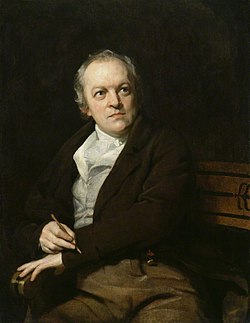
He was ahead of his generation. His fantasy and mystical view of the world were unrecognized by contemporaries, but his work, both in literature and in the visual arts, had a huge impact on modern culture. And that’s all about him, about William Blake.
He was born in a family of stockings on November 28, 1757. In those years, the school was not compulsory for children, and Blake stopped attending it fairly quickly, only by learning to write and read. The study was uninteresting to the young man, unlike the fine arts. However, the parents supported the son’s interest in drawing. Young William skillfully copied the works of old masters, who found in the editions.
In 1772, William Blake was apprenticed to engraver James Besyear. His training lasted 7 years, after which in 1779 Blake entered the Royal Academy. However, the views of the young artist on art did not coincide with the opinion of management and society as a whole. The Academy rejected all the works of William.
In 1804, the artist returned to London, and after a while opened an independent exhibition in the Soho area. The exhibition was held in his brother’s haberdashery shop, there were engravings for Chaucer’s “Canterbury Tales”, but it was unsuccessful, not a single picture was sold, and the only written review was negative. But, despite the lack of money and recognition, Blake worked hard and created a lot of both literary and graphic works. His worldview he reflected in the work, which was a combination of philosophical and mystical arguments about the fate of a person, about his destiny and path, as well as life in general.
In 1782, William Blake met his future wife Catherine. She believed in his talent, and throughout his life he understood how priceless help and support was to him. Among countless failures, Catherine did not let the flame of inspiration in her husband’s soul fade away, and also took part in the printing of his numerous illustrations.
However, Blake and died unrecognized on August 12, 1827. He was considered crazy even by those contemporaries who treated him favorably. Unfortunately, the grave of the artist was not preserved, but later, near the alleged burial place of Blake and his wife, a commemorative plate was installed.
Image: Blake William. Isaac Newton. 1795 (Tate Gallery, London, UK).
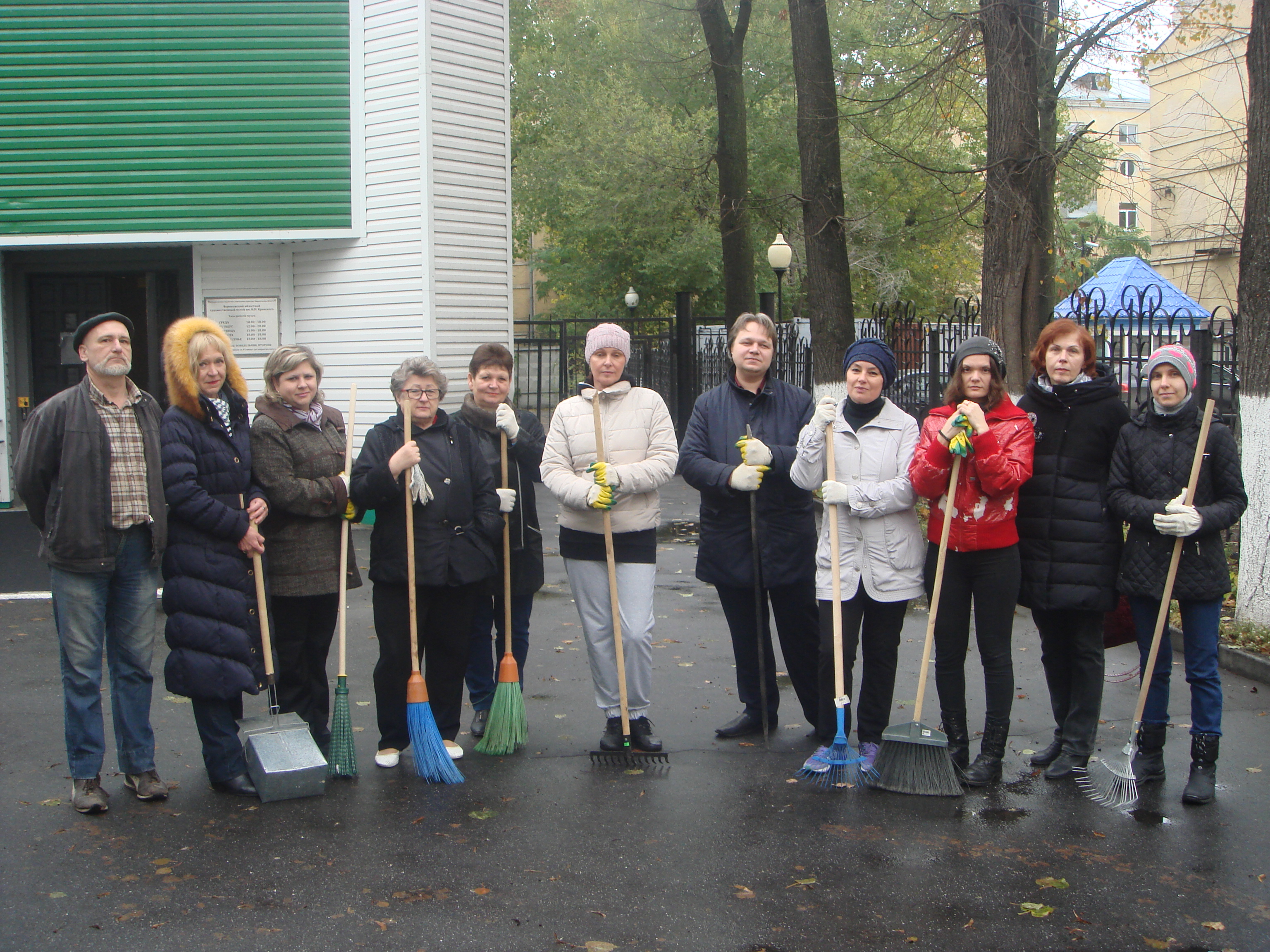
October 28, 2017 employees of the VOKHM them. I.N. Kramskoy took part in a city-wide subbotnik.
During the subbotnik the following works were carried out:
– harvesting foliage and grass from the lawn;
– cleaning of the adjacent territory, asphalted and paved with tiles;
– cleaning the inner courtyard of the museum;
– lubrication of loops and locks of all gates;
– cleaning of the blind area and the foundation of the main building of the museum;
– cleaning from the drainage gutter drainage gutter along the perimeter of the main building;
In total, 19 employees of the museum took part in the subbotnik.

On Sunday, October 22, the first master class from the series “The Spot and Line: Graphic Techniques and Techniques” was held for professionals and amateurs (under the strict guidance of the artist Denis Bulavintsev).
The lesson described one of the types of fine arts – graphics, about her role in art, introduced the concept of “engraving” and its varieties, and carried away with the creation of her own masterpieces (linocut).
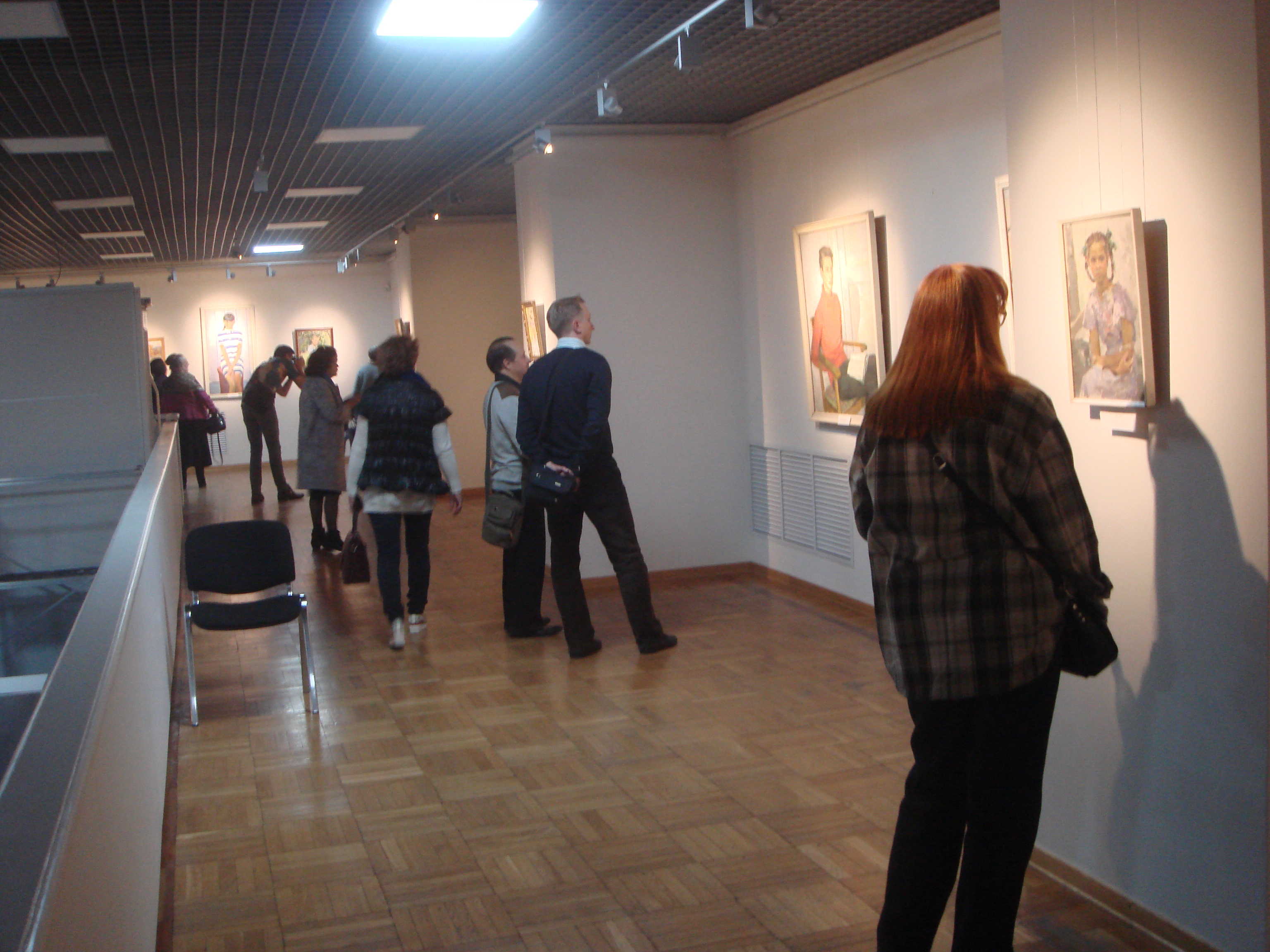
October 20 in the exhibition hall of the Voronezh Regional Art Museum. I.N. Kramskoy began work exhibition, timed to the 95th anniversary of the famous Voronezh artist Ksenia Nikolayevna Uspensky.
The exhibition presents about 30 works by the artist from the collection of the museum and private collections. In a number of the presented works – portraits, landscapes, genre paintings.
Life and work of the artist are connected with Voronezh: here she was born, she was engaged in an art school. For many years, Ksenia Nikolaevna combined artistic pursuits with public and scientific and pedagogical activity.
Looking at the work of the artist, it becomes obvious that Ksenia Nikolaevna treats her models with great attention, supplementing her characters with gestures, poses, and special turns of the head. Sincerity and charm attract children’s portraits. The landscapes made by the author are flowery and lyrical. This is emphasized by the fact that Ksenia Uspenskaya works equally well in different genres.
The exhibition can be visited until November 26, 2017.

October 12 an exhibition dedicated to the 180th anniversary of the birth of our fellow countryman, whose name is named our museum – Ivan Nikolaevich Kramskoy.
The opening of the exhibition is a solemn moment, preceded by a very important, laborious work. This is the preparation of the concept of the exhibition, the thinking and drawing up of the exhibition itself, the compilation of information texts, work in the funds to study and clarify the history of work, the selection of exhibits, the replacement of old frames, the production of frames for paintings not exhibited earlier, the framing of works, the hanging of exhibits, banners and posters, development and printing of etiquette, etc.
All this work is, of course, the work of museum staff: the head of the exposition and exhibition department Olga Alexandrovna Ryabchikova, the staff of the department – Bondarev Ivan Alexandrovich and Burakov Eugene Ivanovich, all the staff of the “Funds” department under the leadership of the main curator Elena Ivanovna Pshenitsyna. A great help in the design of museum works is provided by the staff of the “Titul” Framing Workshop, headed by its director Alexei A. Alsufyev. Printing of posters and banners is traditionally carried out by artists Valery and Albert Gomozov.
During the preparatory work and installation of the exhibition, photo artist Konstantin Kyriakidi (the author of the joint special project “Museum Heroes” dedicated to the Museum Day) watched several days. The result of the observation was his photo works, shedding light on the exhibition “backstage”.
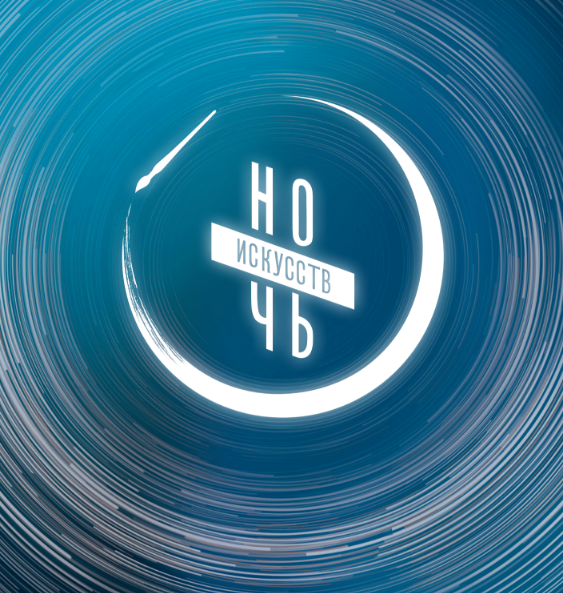
November 4, 2017 on the Day of National Unity Voronezh Regional Art Museum. I.N. Kramskoy will take part in the cultural and educational action “Night of the Arts”, the theme of which is “the 100th anniversary of the revolution of 1917”.
Program of events:
15.00 – 17.00 (lecture hall)
Family masterclass on collage animation “City of Arts” from the studio of screen creativity “Telescope” (8+).
Participation is only by appointment (tel .: 255-50-81)
Limited number of seats!
16.00 – 17.00 (main exhibition)
Concert “Musical Sketches”, performed by ensembles of cellists “Class-cello” and “Cello-Century” by the School № 7 in Voronezh under the direction of Alla Selivanova (0+)
18.30 – 19.30 (exhibition hall)
Lecture “The revolution is different. Pictures of Peter Brueghel” (18+)
(conducted by a senior research fellow VA Shakin)
19.00 – 20.00 (lecture hall)
Express course on drawing of creative posters “Cultural revolution” (15+)
20.00 – 21.00 (exhibition hall)
Demonstration of the film “Battleship Potemkin” (10+)
We draw the attention of visitors!
The museum is open from 14.00 to 22.00.
The time of the action is from 15.00 to 21.00.
Entry to the museum stops 30 minutes before the end of the museum.
Visiting the main exposition of the museum and all temporary exhibitions, as well as all events held within the framework of the action, is carried out on a free basis.

November 3 at 16.00 in the exhibition hall of the VOKHM them. I.N. Kramskoy will host the opening of the exhibition “Orthodox Architecture in the works of Voronezh artists.”
This exhibition will be the second exhibition of this subject. The first exhibition of the same name, held in 2016, had a great public resonance and demonstrated unflagging interest in the theme of the temple construction from the broadest sections of the population. Many visitors to the exhibition noted her high artistic and moral potential.
The new exposition will feature works by famous Voronezh artists expressing their thoughts and feelings in a special artistic form – in the form of drawings, prints, paintings, and the work of students: Voronezh State Institute of Arts, Voronezh State Technical University, Voronezh State Pedagogical University and the Voronezh Art School.
The organizers of the exhibition are the Voronezh Regional Art Museum. I.N. Kramskoy, Voronezh State Technical University, Voronezh Art College, Voronezh Diocesan Office, Voronezh Provincial Noble Assembly, Voronezh Regional Branch of the All-Russian Public Movement “For Faith and Fatherland”.
The exhibition will last until November 26, 2017.
The entrance fee for all categories of citizens is 50 rubles.